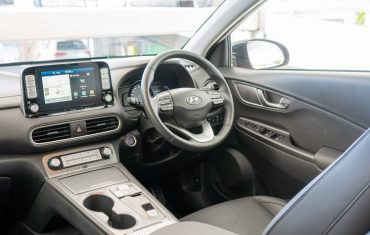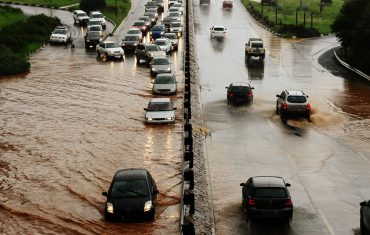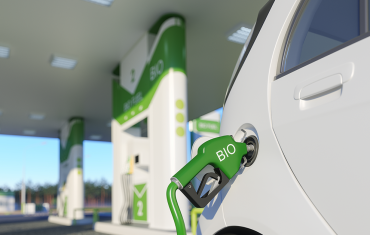
Enabling sustainable and intelligent mobility solutions
For your fleetWhat could mobility look like in our cities as we move into the next generation of autonomous transport? How can movement data be used to overcome urban crowding and road congestion? How have the changes enforced by COVID in Victoria affected the relationship between infrastructure, sustainability and mobility?
These are just some of the questions discussed in March 2021 when ITS Australia conducted their webinar, Enabling Sustainable and Intelligent Mobility Solutions to Cities of the Future. Facilitated by Alvin Lee – HERE Technology’s Head of Government Relations, Asia Pacific – other speakers addressing the subject included:
- Kirk Mitchell, VP Corporate Development, Asia Pacific, HERE Technologies;
- Dr Jonathan Spear, Deputy Chief Executive, Infrastructure Victoria;
- Marcus Blake, Executive Leader, Future Technologies, National Transport Commission.
While the speakers related their experience largely to Victoria, they offered an in-depth and informative examination of future challenges around our ever-growing cities and facilitating safe, sustainable and efficient mobility that could be applied to both Australia and New Zealand. Following is a summary of their insights.
Cities and Commerce: The value of real-time data
Commencing the webinar, Kirk Mitchell from HERE Technologies stated that movement data — “data which people have either in vehicles or through smartphones that allow us to understand in real-time the movement of people across cities and road networks” — had a vital role to play in overcoming some of the challenges that densely populated cities presented to mobility and safety.
In addressing this topic, he said that HERE is studying the use of road networks to understand how best to ensure more efficient usage moving forward. Far from being limited to roads, though, Kirk emphasised that the study considers all transport modes, and he related his first-hand experience of partnering with Amazon as an example of how this can play out.
“They’re getting to a point where Prime Now guarantees, on certain items, 60 minutes delivery anywhere in the country, which is absolutely incredible,” explained Kirk. “And the way that’s done is by working with them, looking at the most optimal path of transportation.”
“In many cities now, we don’t have to dispatch a two-wheeler but have Amazon leverage the transit service, because it’s going to be quicker to go on transit with deliveries than it would be through a driver in a van or two-wheelers.”
“Post-COVID, people are very used to e-commerce,” he concluded. “We have to ensure that we manage the peak loads that are happening more frequently but look at ways to use, not just the road network, but other modes of transportation in delivering that.”
Mobility use, sustainability and infrastructure in ‘COVID Normal’ Victoria
The next speaker to address the webinar was Dr Jonathon Spear from Infrastructure Victoria. He spoke about mobility and sustainability in terms of how government policy needs to complement emerging workplace trends in a post-COVID Victoria, which has seen a drop-off in the use of public transport and an increase in vehicle use.
“If we don’t change the pathway that we’re on,” cautioned Dr Spear, “we can expect car use in inner Melbourne to increase by about a hundred-thousand additional car trips every day. That really slows traffic down and increases congestion by 20 to 30%, to speeds that we could probably cycle faster [in] than drive.”
“The other thing we found is that if we continue to have people working from home for some of the week, and keep some flexibility, not only about the days but the times that people choose to travel, they can make much better use of our transport network and help to make sure there’s ample provision for physical distancing while that remains something we need to be conscious of. That to me is another form of sustainable, intelligent mobility.”
Autonomous vehicles and mobility
Marcus Burke from Future Technologies at the National Transport Commission (NTC) was the final speaker in the webinar. A significant focus for Marcus and his team is the program of work to support future use of automatic vehicles. To tackle this, the NTC is unearthing answers to some important questions; one of the most pressing of these, according to Marcus, being the management of access to the data generated by not just autonomous vehicles but entire vehicle fleets.
As he explained, the NTC now has access to rich new sources of information thanks to the safety sensors and other technological gains present in modern vehicles.
“We’re trying to look at whether there are opportunities for governments to use this vehicle-generated data to improve things like road safety, network efficiency, investment decisions, and also decisions around maintenance of the infrastructure,” he explained.
“An example is if a vehicle triggers its electronic stability control. That information, and the location where that happened, is transferred to a road manager. If several vehicles are similarly engaging their electronic stability control in the same area, that may indicate a spill on the road, or ice on the road, or some other issue with the infrastructure that the road manager needs to be aware of.”
“If they receive that data in real-time, they can respond [faster] and try and address the issue to avoid safety issues and avoid unnecessary congestion. So [we’re] looking for those kinds of opportunities where there’s unique data that is being captured by the vehicle that could provide benefit to drivers out on the road.”
“There’s a need to further develop the use cases, data standards and the framework for sharing data between industry and government, recognising the privacy concerns, recognising the commercial value of this data. And there’s also a need to further build capabilities within government. So, we have the ability for road agencies to accept that information, process it, use it and – where we’re needed – send that back out to road users to actually make use of that data.”
The role of 5G in the deployment of future mobility solutions
Each of the webinar speakers had interesting insights to share on the role of 5G for mobility solutions.
For Marcus, the exact role that 5G will play is still being determined: “There’s still alternative standards around the use of 5.9 gigahertz and 5G for vehicle-to-vehicle and vehicle-to-infrastructure communication. That connectivity is going to be a really important part of any future solutions.”
Jonathan stated, “The thing I observe: is 5G going to be deployed more broadly anyway for other uses? The ability to leverage [5G] for transport uses would be really helpful but it may not be enough. And there may be other more bespoke approaches that are used as well in particular settings or for particular uses or technologies.”
Kirk concluded, “With 5G, many people think it’s about connectivity, which indeed it will be if we actually reduce latency speeds. But, for me, this also shifts completely the mentality in which we build systems. It’s really about actually allowing the computing power to happen. We’re redefining the way we actually build these decentralised systems. It’s really leveraging the network for computing power as much as it’s reducing latency as well. It’s still in its infancy but I think there’s huge promise around what 5G will bring.”
So, what does it all point to?
Such a robust discussion between speakers at the webinar left participants with much food for thought regarding mobility in our cities of the future. Broadly speaking, the following conclusions could be drawn.
The importance of metrics and data as the cornerstone for meaningful analysis has been beyond question for a number of years. However, as technological advances like 5G spectrum facilitate access to more detailed data than ever before, creating a range of platforms that provide access to real-time information will play a big role in facilitating efficient and sustainable mobility. This information will also have a substantial role in infrastructure spending decisions and inevitably cause an almost revolutionary re-think of when, where and how we work.
But while the digital revolution provides us with a wealth of data for information and analysis, it also raises some important questions about privacy, data collection and perhaps most importantly, data security/secure storage. Finding an effective balance between the use of data to facilitate mobility while protecting and respecting the rights of the people who provide that info will play a key role in the progression of efficient and sustainable mobility in cities with ever-growing populations.
Watch the webinar from ITS Australia: Enabling Sustainable and Intelligent Mobility Solutions to Cities of the Future.
Start a conversation with LeasePlan for more information on sustainable mobility.
 Driving Insights
Driving Insights




